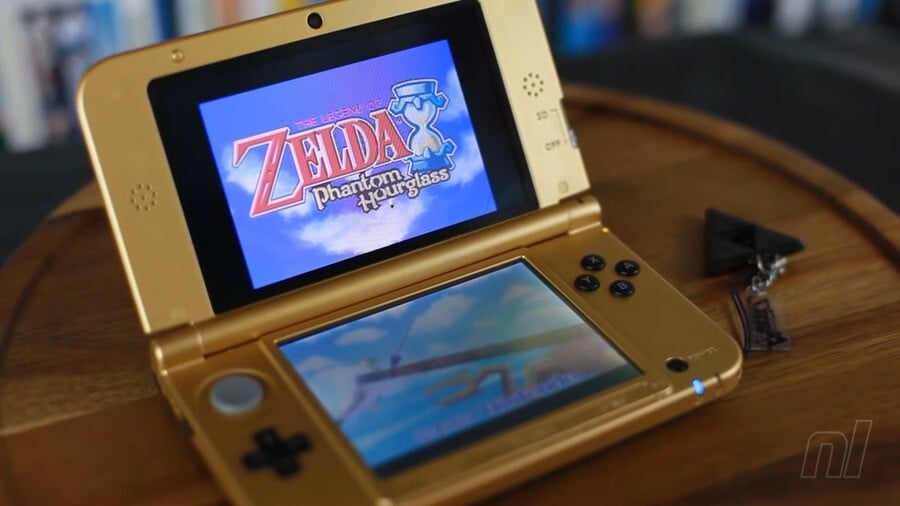To celebrate the 35th anniversary of The Legend of Zelda, we’re running a series of features looking at a specific aspect — a theme, character, mechanic, location, memory or something else entirely — from each of the mainline Zelda games. Today, Kate reminisces about the good, the bad, and the stylus controls of Phantom Hourglass…
You know, I can’t decide if The Legend of Zelda: Phantom Hourglass is admirably brave, or lovably stupid. The handheld Zelda games have always been a little… weird, whether it’s Minish Cap‘s “what if Tingle had a family” or Spirit Tracks‘ “what if the bad guy was a train”, and that’s largely down to the fact that Nintendo can afford to go a bit wild on the Zeldas that aren’t on the big consoles. They fly a little under the radar, they aren’t always 100 per cent canonical, and as a result, they can easily play with the established formula a little more, since no one takes them quite as seriously as a full-fledged title.
Enter Phantom Hourglass: the sort-of-but-not-quite sequel to Wind Waker, in which the world is still A Big Wet, but Tetra the badass pirate is no longer trapped in the body of a blonde woman who’s stuck in a basement. It was quite a gamble – Wind Waker was a huge success, and is one of the most beloved Zelda games to this day, so to set a game in its world is a risky proposition.
For the most part – at least, in my opinion, which is what you’re about to get several hundred words of – Phantom Hourglass carried the torch well, but what it’s remembered for more than anything is its central dungeon. Let’s get into that first, eh?
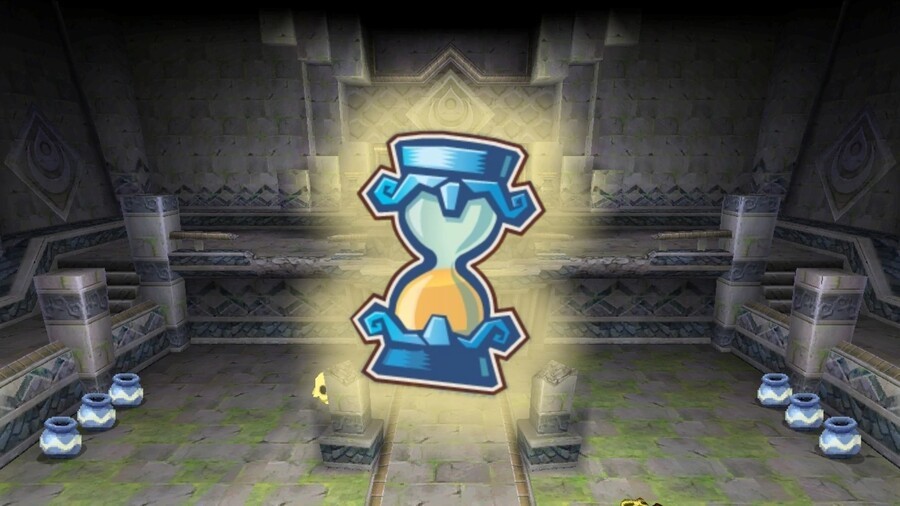
The Temple of the Ocean King, AKA the Bane of the Video Game Player, is a temple dungeon divided into individual levels on each floor that must be done no less than five times. If you thought Ocarina of Time‘s Water Temple was a pain in the bum, then you ain’t seen nothing yet. Each time you revisit The Temple of the Ocean King, you have to re-do many of the puzzles and stealth challenges you’ve already done – because, oh yeah, the whole thing is a stealth dungeon – although new items gained in the meantime will open up the occasional shortcut.
DID I MENTION THAT THE DUNGEON IS ALSO TIMED? No, I did not. But it is, and going over the time limit will deal damage to Link. Time limits, stealth, and repetition are perhaps my three least favourite game mechanics – and yet, I consider Phantom Hourglass one of my favourite Zelda games of all time. What gives?
Well, many things gives. To begin simply, it’s a fantastic use of the DS’ technology; the stylus is used for everything, from movement to combat to one particularly great moment where you have to map out an entire island on paper. Sure, that may have been a negative for some people, and I certainly don’t think I’d enjoy it quite as much today, what with all that tendonitis I have, but back then, it was a revelation.
Nintendo have always enjoyed experimenting with their console tech, and for the first few years of the DS, the Wii, and the 3DS, we were treated to some novel and creative uses of those technologies. For the Wii, it was games like Wii Sports and Okami; for the 3DS, Luigi’s Mansion and Super Mario 3D Land used the autostereoscopic feature as much as they could; on DS, very few games reached the stylus-use heights of Phantom Hourglass.
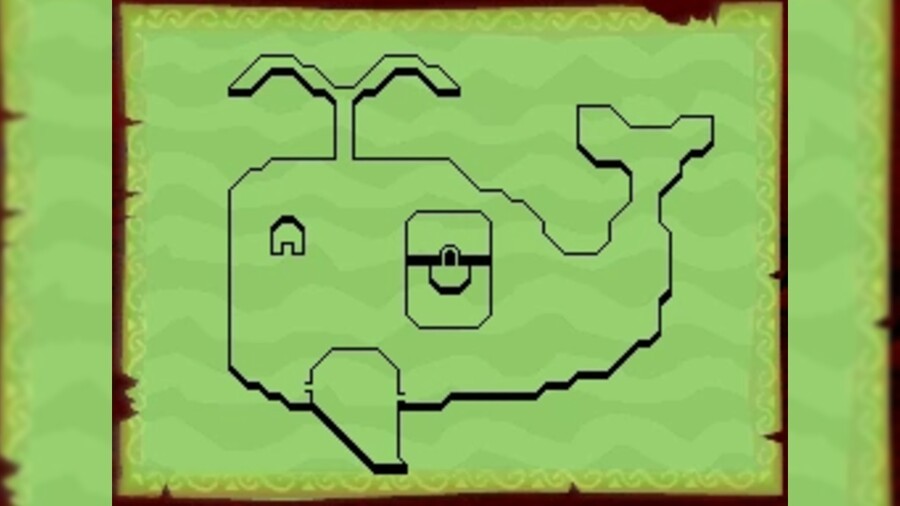
One of the greatest features of Phantom Hourglass was the way it let players doodle all over the map. Breath of the Wild‘s map pins and stamps were but a limited replication of Phantom Hourglass’ note-taking, which would let you jot down where specific items, chests, and enemies were, or just draw a giant dong, if you wanted. Some dungeons revolve around the idea, and Bombchus in particular (which are far more useful in this game than any other) require drawing a precise path that doesn’t touch any walls. Pen-based gameplay? Heck yeah! Sign me up, baby.
But, for a chunky-looking handheld game that was trying to replicate a specific, cel-shaded style on a much more powerful console, Phantom Hourglass is also full of personality. Taking its cues from the cheeky, expressive Wind Waker Link, Phantom Hourglass has our hero pulling all sorts of goofy faces, with a huge deal of humour made possible by the animation, even despite his lack of spoken lines.
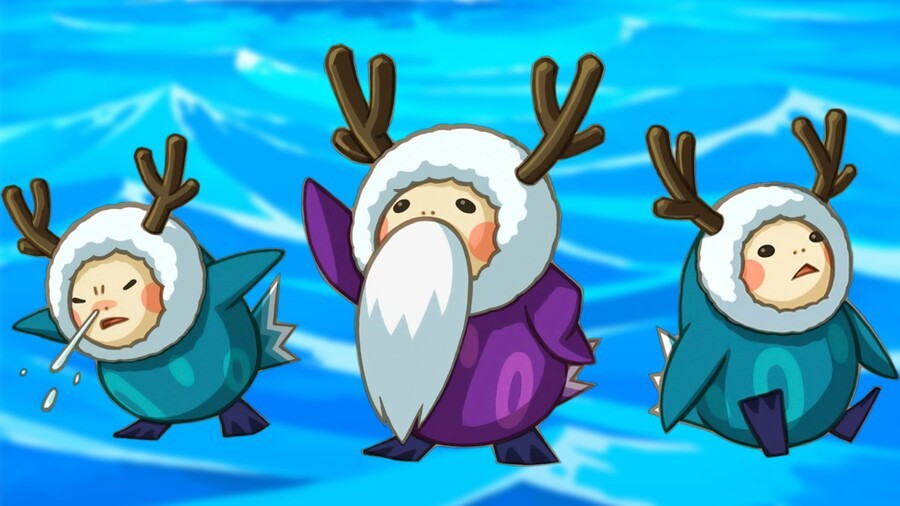
There’s also Linebeck – the love-him-or-hate-him sea captain introduced in Phantom Hourglass – who fulfils that satisfying trope of “washed-up treasure bastard with a heart of gold”, and Oshus, the loveable, grumpy old man who helps Link in his quest and then turns out to be a whale-deity. It’s always the ones you least expect. Every character in this game is brimming with personality, stories, secrets, and
Most fans of the game will remember its finest, and most frustrating moment above all others – the bit where you have to transfer a map to another map. For me, I discovered it entirely by accident, and I’m sure I’m not alone in that. After a confused 20 minutes of trying to draw, button-press, and logic my way to victory, I closed the console and stepped away – only to discover that that’s exactly what you’re supposed to do. Phantom Hourglass punched through the fourth wall and broke into the meta-game by insisting that you transfer details from the top screen to the bottom screen by folding your DS in half like a book.
There have been a bunch of games in the meantime (and before Phantom Hourglass) that used clever console trickery to force players into trying new things. There’s the (abandoned) Banjo-Kazooie Stop ‘N’ Swop feature, which required players to switch out cartridges while playing, or ‘s trick where you have to switch controller ports to stop the boss from “reading your mind”. These weird little fourth-wall-breaking tricks are annoying when you’re playing the game, for sure, but become legendary as time goes on, and nostalgia’s erosion rounds off the sharp edges.
Writing this has made me realise how much I miss stylus-based gaming. There’s nothing quite like the verisimilitude of a touchscreen, or the instantaneous way it lets you interact with things on-screen. With a brain, a finger, a button, and a game, there’s always a slight delay between each, but brain-touch-screen is satisfying in some deep-seated primal way. Don’t ask me why! I’m not a scientist, despite claiming multiple times to be good at science.
Plus, as a gamer and person with a terrible attention span and a love of fiddling with things to stay focused, you can’t beat a stylus. You can draw little doodles with it, and some of my best work on Phantom Hourglass – as ephemeral as it was – was lovely to see, every time I would return to a map with a big Toon Link sketched across it.
Phantom Hourglass, overall, is both admirably brave and lovably stupid, you see. That’s why it’s so great: like many of the best Zelda games, it tries new things, and even though it often falls over its own feet like a puppy learning to chase a ball, you can’t help but smile. The repeated dungeon might not be the most fun, but it’s certainly interesting, and the riddles and puzzles are so frustratingly smart-yet-obvious that Professor Layton himself would be proud. It’s not the riskiest Zelda, and it’s not the most well-polished Zelda, but it’s so full of heart, charm, and wit that it stands alone as potentially the funniest of them all.
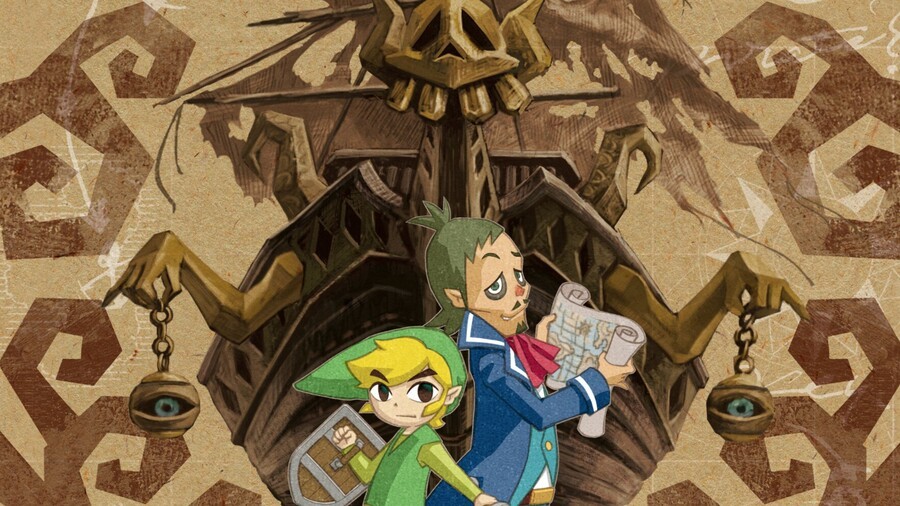
I hope, one day, that we get back some of what we lost after the heydays of DS-based Zeldas: the stylus controls, the goofs, and the freedom to doodle all over the map. We’ve done horses, boats, and trains, so how about, er, a Zelda game in a car? Or a plane? Hit us up, Eiji Aonuma. We’ve got some fantastic ideas.

